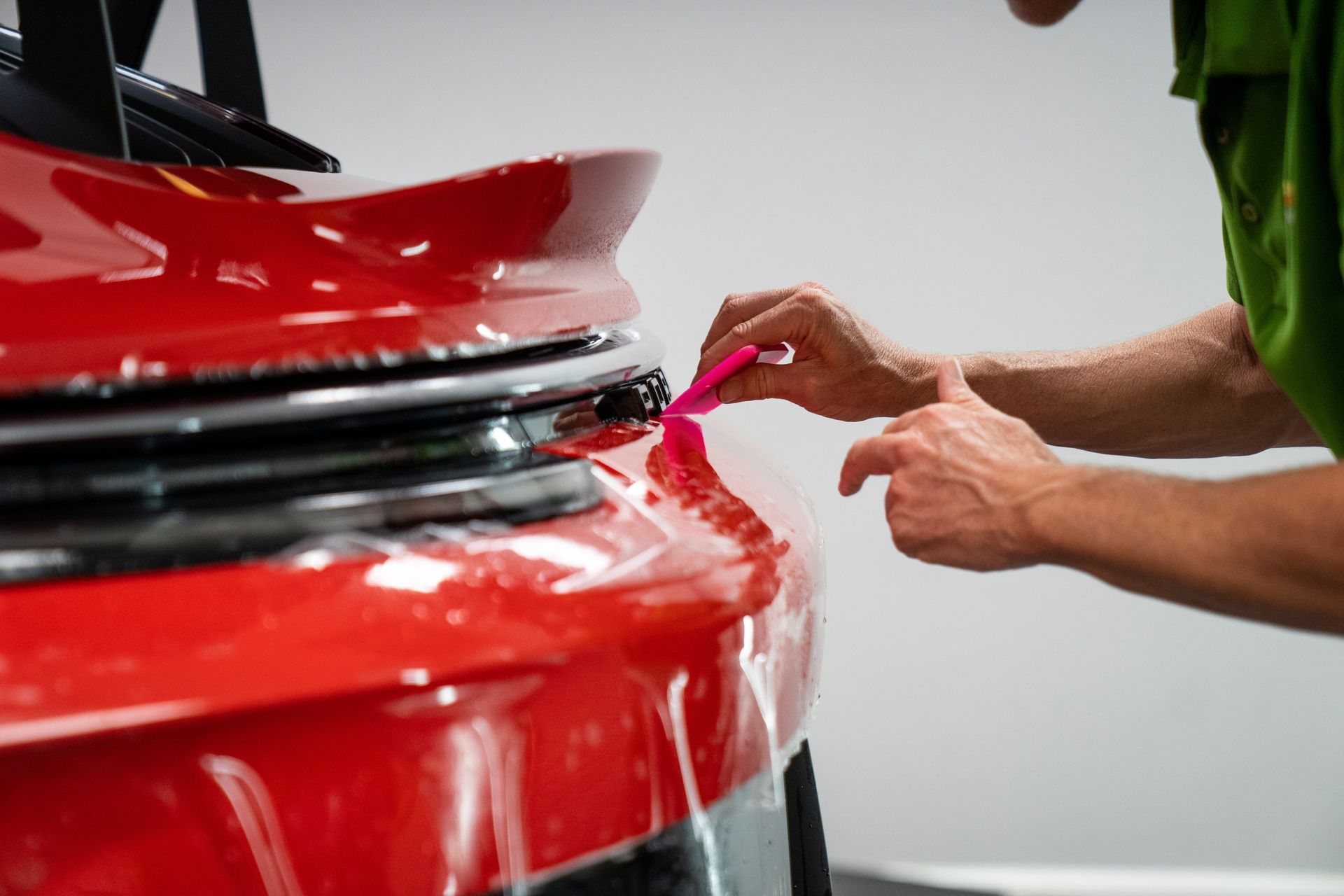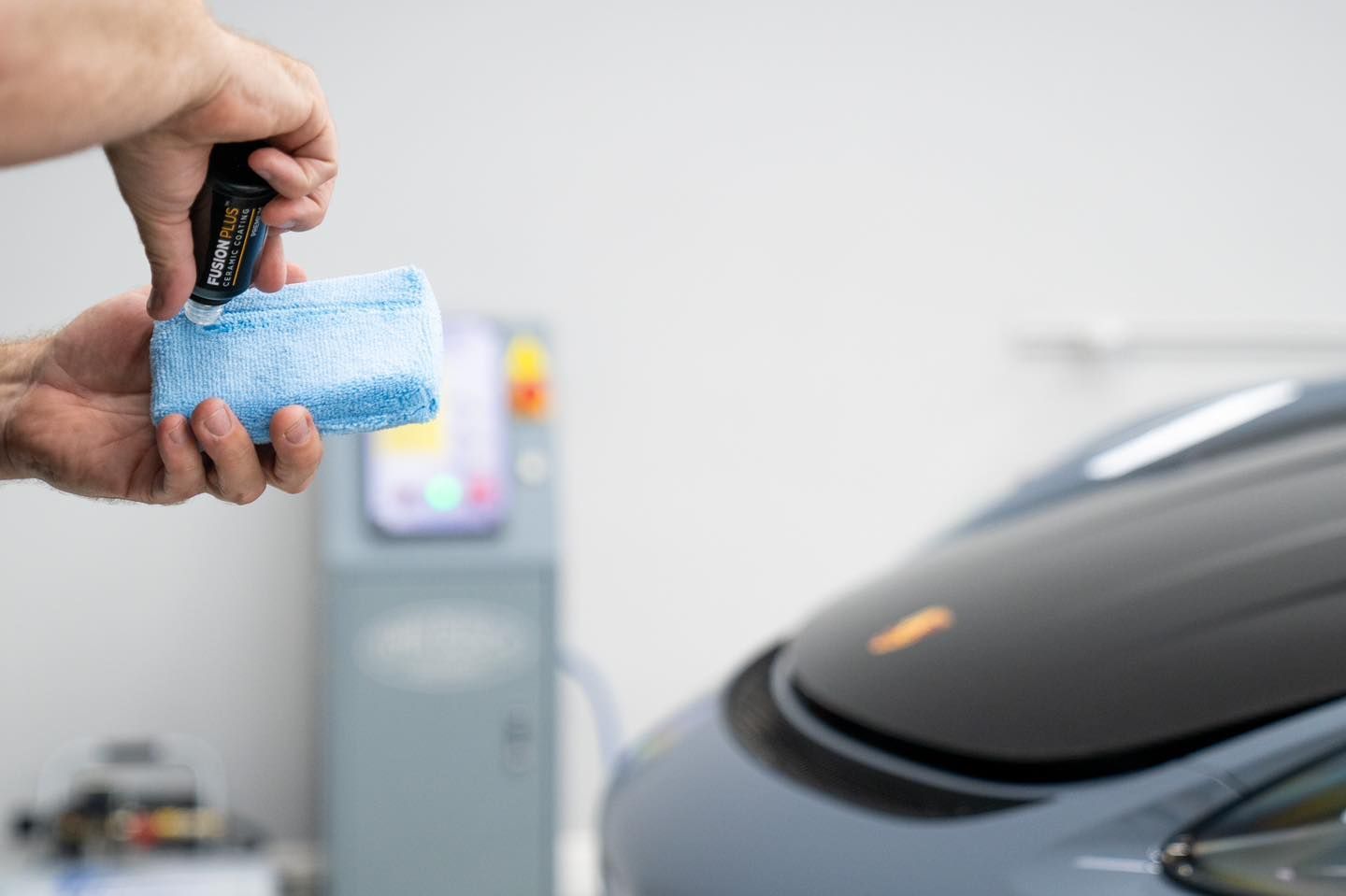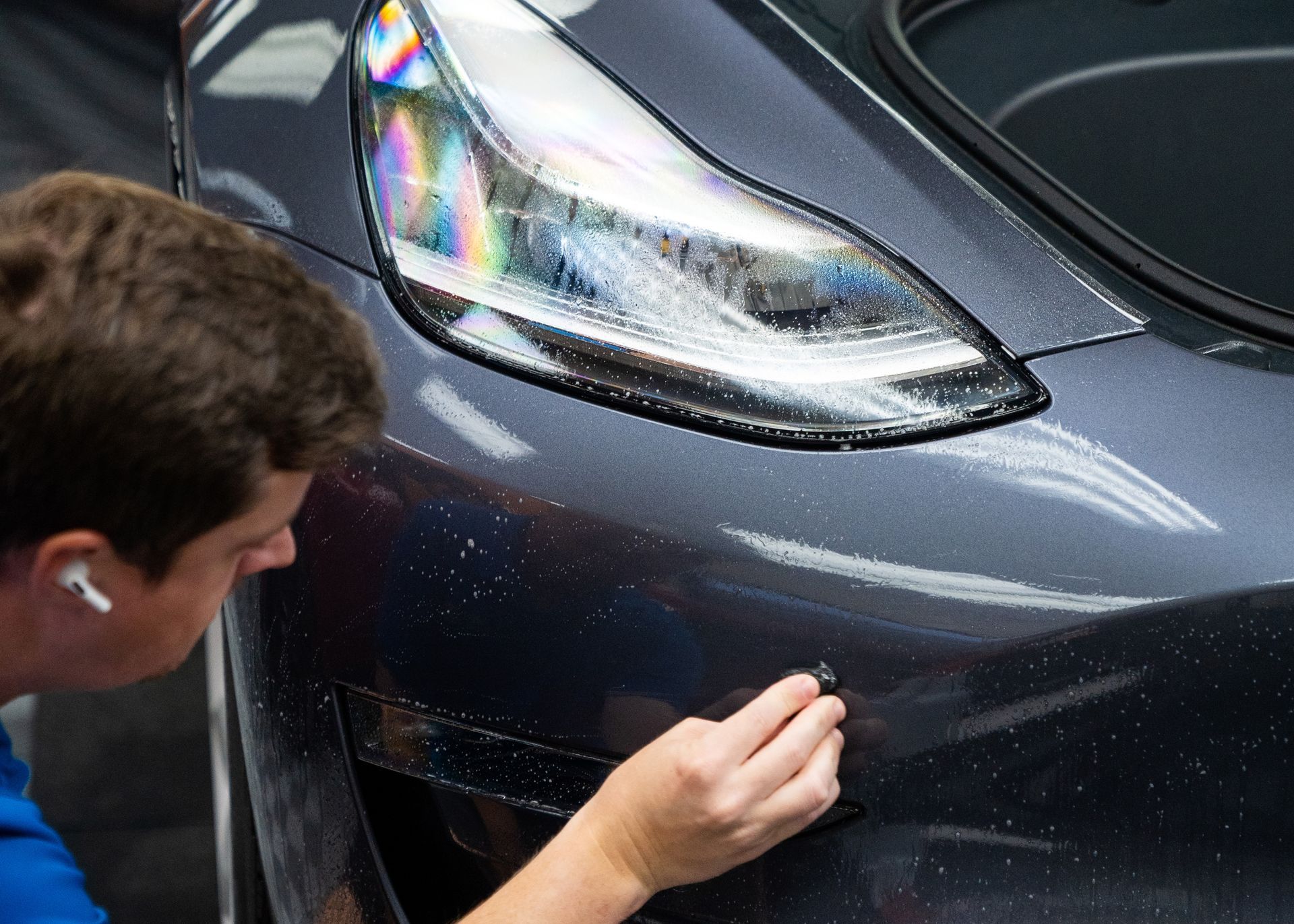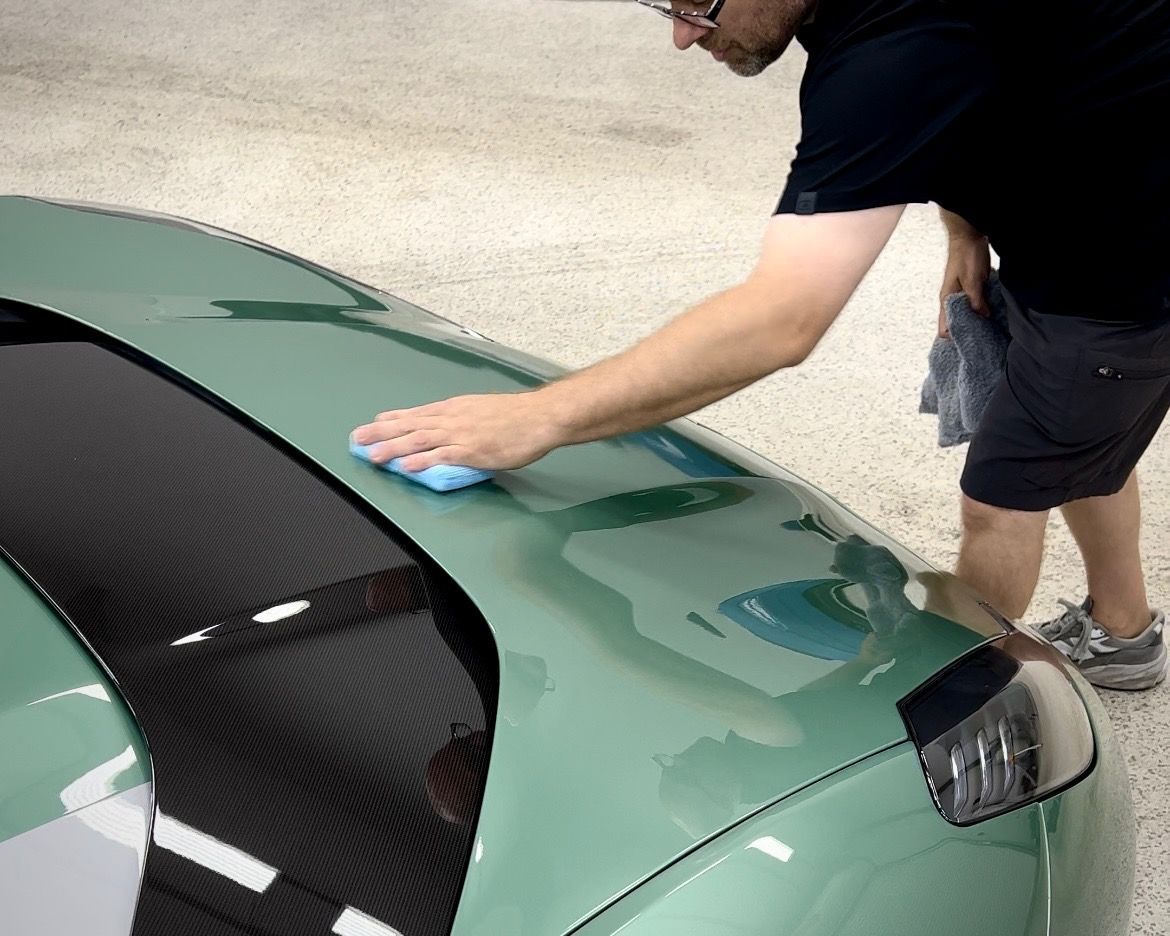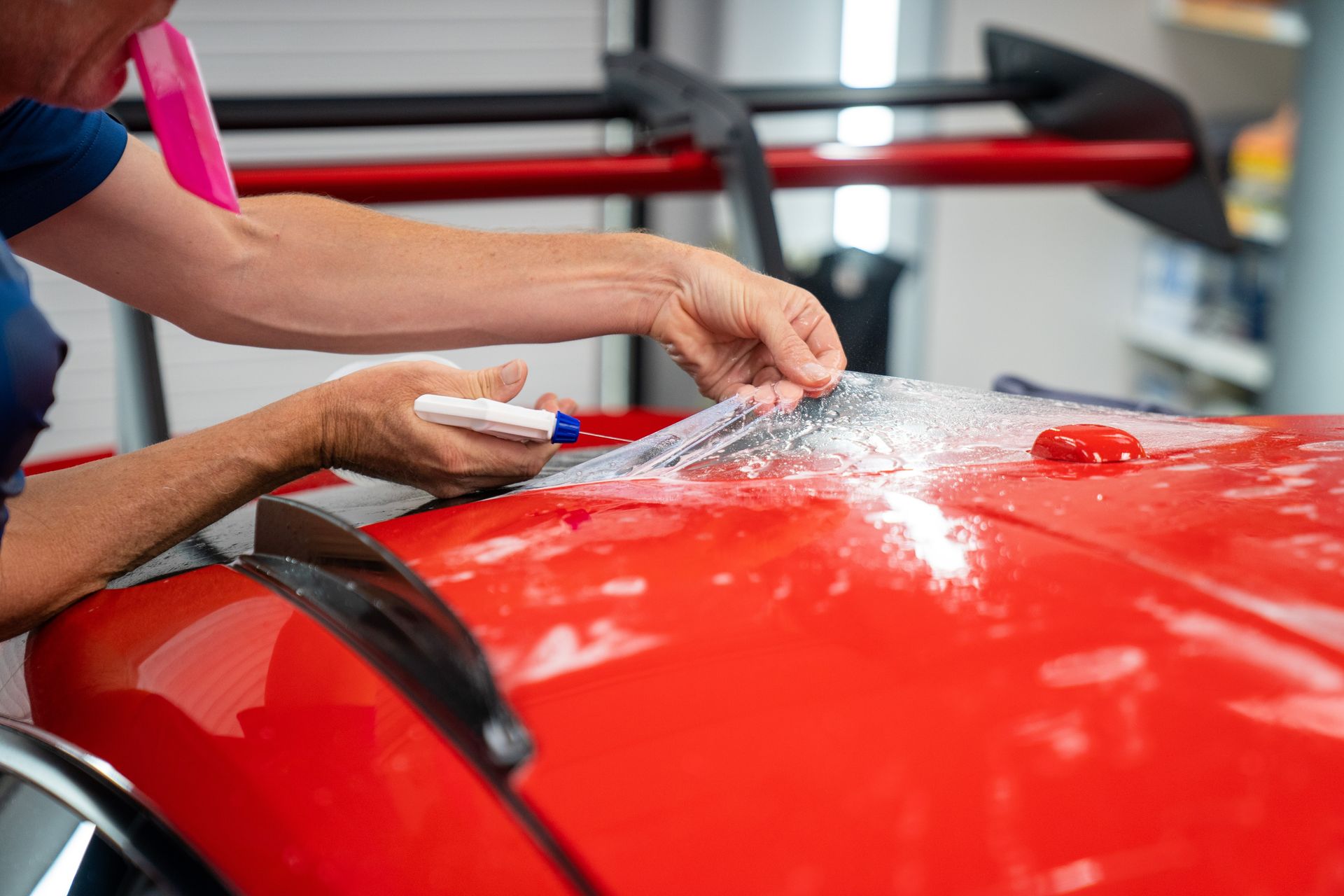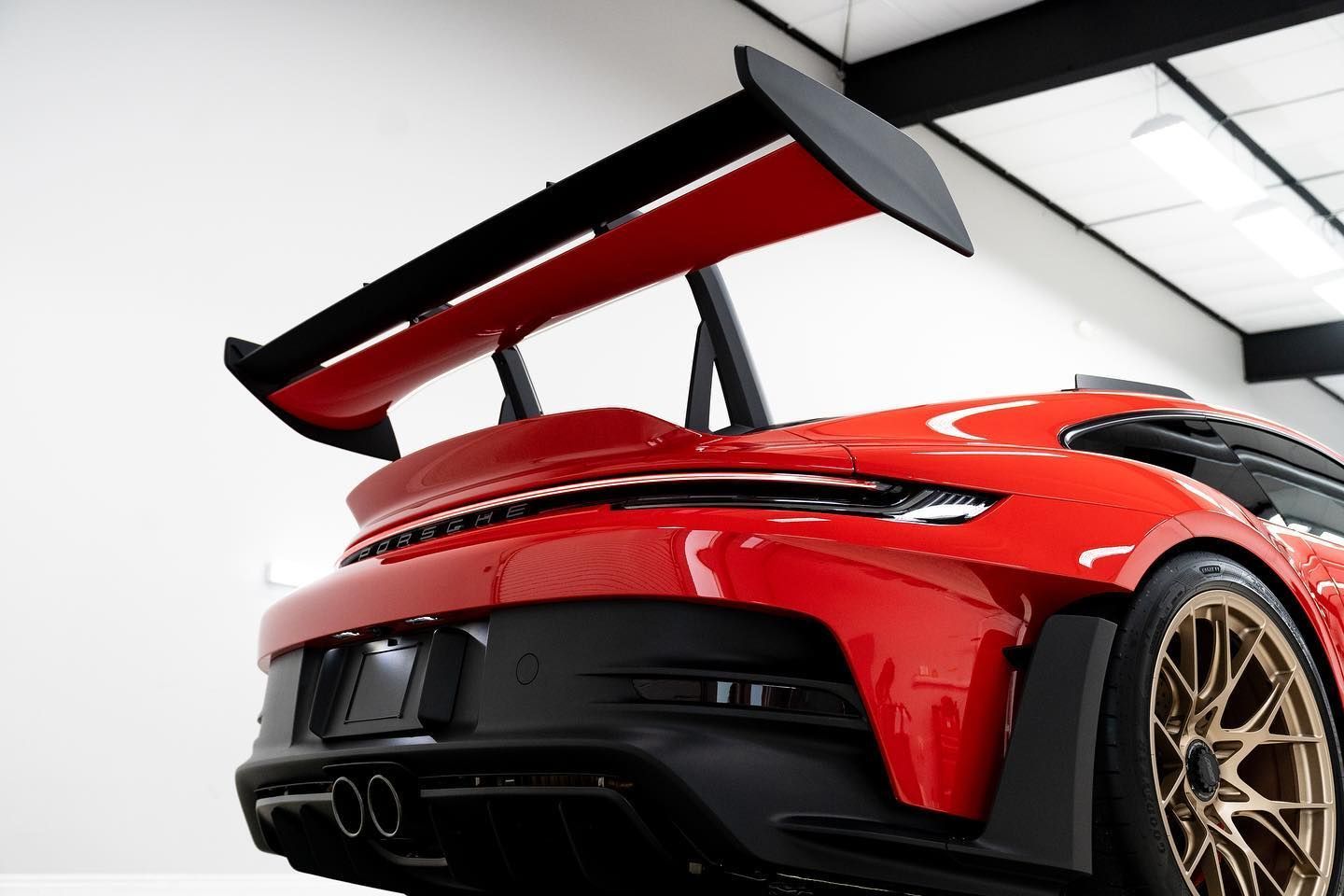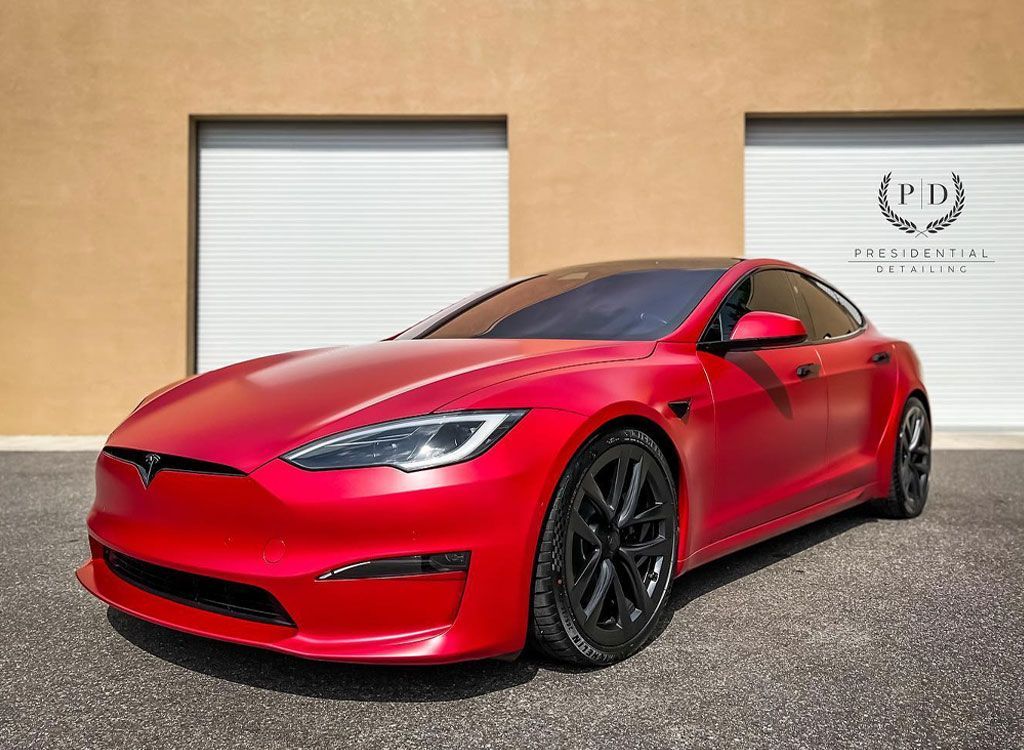The Ultimate Guide to PPF Replacement: Recognizing Common Wear and Tear Indicators
CALL (813) 723-9679
GET A FREE ESTIMATEEnsuring that your car's paint remains pristine isn't just about appearances—it's also about preserving its value. As an enthusiast who is meticulous about vehicle maintenance, you already know how vital paint protection film is. But uncertainty lingers: when should you replace it? Those small scratches, subtle yellowing, or slight lifting at the edges could all be signs that your PPF needs attention. This comprehensive guide explores these subtle yet crucial indicators in detail.
Common wear and tear indicators for paint protection film include scratches, cracks, changes in color, visible blemishes, or a loss of gloss on the film's surface. If you notice these signs during inspections, prompt replacement is necessary to safeguard your vehicle's paint.
Common Wear and Tear Indicators
Understanding the visible signs that indicate your paint protection film needs replacement is essential for maintaining the integrity and appearance of your vehicle. Scratches, cracks, discoloration, and lifting edges are key indicators that it may be time to consider replacing the protective film. These signs can diminish your car's glossy appearance and compromise its protection against environmental elements.
Scratches on the paint protection film can occur due to various factors, such as road debris or accidental abrasions. Even superficial scratches can weaken the film's ability to shield your car's paint from further damage. Likewise, cracks in the paint protection film may result from impacts or prolonged exposure to harsh weather conditions. Therefore, being attentive to these imperfections during regular inspections can help you address them promptly before they escalate into more significant issues. Signs of damage to the paint protection film include scratches, cracks, changes in color, and visible blemishes. Even minor damage can lead to further deterioration.
Discoloration is also a noticeable change in the paint protection film's appearance, often evident as yellowing or fading. Exposure to UV radiation, particularly on vehicles parked outdoors for extended periods, accelerates this process. The loss of gloss on the paint protection film's surface signifies wear and tear, reducing its durability in preserving the vehicle's paintwork. It's important to remember that environmental factors like harsh weather conditions and UV radiation can significantly impact the protective properties of the film over time. This underscores the importance of a periodic review to assess any changes in the film's condition.
Another significant indicator that it may be time for paint protection film replacement is edge detachment. When you notice peeling or lifting edges, it's essential to address this promptly, as it compromises the coverage and protection provided by the film. Some might underestimate the impact of lifting edges on the effectiveness of PPF, but when left unattended, it can expose vulnerable areas of the vehicle's surface to potential damage. Dirt and grime can accumulate in these exposed areas, leading to a compromised protective barrier.
Recognizing these common wear and tear indicators serves as an essential guidepost for deciding when it's time to replace your paint protection film. Regular assessments and proactive maintenance contribute to enhanced protection against scratches, rock chips, and UV damage while maintaining your vehicle's glossy appearance.
Signs of Scratches and Cracks
Sometimes, it's the little things that cause the most trouble. For instance, minor scratches might seem harmless, but they can spell trouble for your paint protection film. Even tiny scratches can lead to significant damage if they're not addressed promptly. A seemingly superficial blemish on the paint protection film actually becomes a gateway for harmful contaminants to penetrate and harm the vehicle's paintwork. These seemingly unimportant scratches become critical entry points for moisture, grime, and other pollutants to infiltrate the protective layer and damage the vehicle's paintwork. Their appearance might be insignificant at first glance, but over time, they can cause serious harm to your car's finish.
Now, how do you spot these sneaky scratches? One way is to closely inspect the surface of your PPF under bright light. Minor scratches will catch the light and appear as faint lines or marks on the film. Pay extra attention to areas that are more susceptible to impact, such as the front bumper or sides of the vehicle. When it comes to deep cracks, it's serious business. These chasms in the film are usually born from encounters with sharp road debris or stones. Unlike minor scratches, deep cracks are instantly noticeable, marring the smooth surface of the paint protection film and indicating a significant impact. If left unchecked, these breaches allow harmful elements to seep through and inflict irreversible damage to your vehicle's paint, ultimately defeating the purpose of having a paint protection film in place.
Identifying deep cracks is relatively straightforward—they'll be clearly visible and often emerge as jagged lines or breaks on the surface of the paint protection film. You should pay special attention to areas that are prone to impact, such as the lower portions of your car exposed to road debris. By recognizing these early warning signs and promptly addressing any scratches or cracks on your paint protection film, you can effectively preserve the protective properties of the film and safeguard your vehicle's paint against potential harm. Keep an eye out for these indicators during regular inspections to ensure that your car remains well-protected.
Evaluating Edge Detachment
One of the main indicators for paint protection film replacement is edge detachment. Over time, the film's edges may start to peel or lift, compromising its protective coverage. This not only affects your vehicle's aesthetics but also significantly reduces the film's effectiveness in safeguarding your car's paint. Hence, being aware of and addressing edge detachment is crucial for maintaining the integrity and protective capabilities of the PPF. It's crucial to conduct a thorough visual inspection of the edges of the paint protection film during routine maintenance checks. Keeping an eye out for any signs of peeling or lifting can help you evaluate the condition of the film and determine if it needs replacement. Even the smallest detachment can allow dirt, moisture, and UV rays to penetrate under the film, potentially causing damage to the underlying paint.
Inspection Process
When inspecting the edges of the PPF, pay close attention to any peeling or lifting. If you notice any issues, you can gently press down on the affected areas to check if they adhere back in place. However, if you find that edge detachment persists or worsens despite your efforts, it's a strong indicator that it's time to consider a replacement. It's important to understand that a swift response to edge detachment is vital to preserving the quality of your vehicle's paintwork. Delayed action can lead to further deterioration and increased susceptibility to damage, ultimately resulting in costly repairs down the line.
Considering that edge detachment compromises both the effectiveness and visual appeal of PPF, periodic inspection becomes an imperative part of your maintenance routine. Regularly checking for these indicators enables early issue detection and timely measures to address them. Ensuring that your paint protection film remains firmly adhered along the edges contributes significantly to maintaining your vehicle's aesthetic appeal while providing robust protection against environmental factors like road debris, UV radiation, and weather-related elements.
By recognizing edge detachment as a significant wear indicator and promptly addressing it through appropriate replacements when necessary, you can effectively protect your vehicle's paintwork while retaining its glossy appearance. This proactive approach not only maintains the aesthetic appeal of your car but also safeguards its resale value while reducing the potential repair costs associated with damaged paintwork.
Assessing Gloss and Surface Quality
The state of the gloss and surface texture of your paint protection film can reveal vital clues about its condition. When your car rolled off the lot with its new paint protection film, it had a brilliant shine and a smooth, flawless finish. Over time, the film's gloss may diminish as it combats environmental threats and daily wear and tear. A loss of shine signifies that the PPF is losing its protective capabilities, making it crucial to evaluate this element carefully. Gloss level readings are a pivotal indicator; an evaluation below 80 gloss units (GU) can flag significant gloss loss. Using a gloss meter can provide precise measurements, allowing you to monitor the PPF's luster over time accurately. It's analogous to assessing the shine on a freshly waxed car; if it's lost its luster, it signifies a decline in protection and aesthetics.
The Importance of Retaining Gloss
Maintaining the glossy appearance of the paint protection film surface isn't just about looks; it acts as a visible testament to the film's protective integrity. Just like a glossy shine reflects a luxurious appearance on a well-maintained vehicle, it also underscores the film's ability to guard against scratches, rock chips, and UV damage. Measuring gloss isn't just about appearances; it offers a quantifiable way to gauge the film's health and determine if it's up to the task of defending your vehicle's paintwork. Think of it as checking for a pulse—an essential diagnostic step that indicates the film's continued protection or potential degradation.
Surface Feel Assessment
Running your hand across the surface should yield a smooth, even texture. Any deviation from this standard, such as roughness or uneven spots, can signify wear and tear that compromises protective efficacy. It's akin to feeling the softness of fine fabric; irregular textures indicate deterioration and reduced effectiveness. To put this into perspective, imagine running your hand over a brand-new smartphone screen: it should feel uniformly smooth without any texture irregularities. Similarly, ensuring that the PPF maintains this level of smoothness is crucial in confirming its continued ability to shield against environmental hazards.
Assessing gloss and surface feel provides critical insights into the health of your PPF. It acts as an early warning system for potential degradation and underscores the necessity of timely replacement to ensure continued protection for your vehicle's paintwork.
Impact of Environmental Factors
A paint protection film is designed to shield your vehicle from a range of potential threats, but it's not invincible. Harsh weather conditions pose a significant challenge as vehicles exposed to excessive sun, rain, or snow can suffer accelerated deterioration, with UV radiation in particular degrading the film's integrity over time. Constant exposure to UV rays can cause the paint protection film to weaken, affecting its ability to provide optimal protection to your vehicle's surface. This deterioration can become noticeable in a variety of ways, such as changes in color or texture.
Let's take UV radiation, for instance: When the film is incessantly bombarded by ultraviolet rays, it breaks down the molecular structure of the film, leading to discoloration, loss of flexibility, and even eventual peeling if left unchecked. It's similar to how prolonged sun exposure can affect our skin—it damages our protective layer and accelerates aging. Now, think about that impact on an automobile’s surface, which is constantly exposed to sunlight. Imagine leaving your car parked outdoors for extended periods without any protection—UV radiation will be more intense during midday hours, which might lead to faster deterioration. If you live in an area with very hot summers and intense sunlight, this degradation process may happen at a much faster rate compared to someone in a cooler climate.
In addition to weather conditions, road debris also plays a considerable role in determining the wear and tear on your paint protection film. Frequent driving on gravel roads or areas with significant debris increases the chances of impact scratches and abrasions, directly affecting the lifespan of your PPF. It’s important to understand that road debris isn't exclusively limited to rough, off-road terrain; even urban environments can have their fair share of abrasive particles. Driving behind construction vehicles or commuting through areas with ongoing roadwork can expose your car to various types of debris like sand, gravel, or small rocks that pose a threat to the paint protection film.
It's like wearing armor while marching through a barrage of pebbles—but over time, they begin to chip away at the armor until it’s no longer as effective as it was initially. As we examine these factors closely, it becomes evident that environmental elements can significantly impact the durability and effectiveness of your paint protection film. Understanding these influences helps you make informed decisions about protecting and maintaining your vehicle's paint protection film.
Guidelines for Timely Replacement
When it comes to replacing your paint protection film, understanding the recommended timeline is crucial. While a replacement every 3-5 years is generally advised, this timeframe can be influenced by various factors, such as usage and the environment your vehicle is exposed to. For example, cars stored outside or in areas with severe weather conditions may require more frequent replacements due to increased exposure to damaging elements. It’s important to note that even if the film appears intact, environmental factors like UV radiation and harsh weather can degrade its protective properties over time. Therefore, regular inspections should not be overlooked.
Regular inspections play a vital role in ensuring the effectiveness of your paint protection film. By inspecting your paint protection film every few months, you can stay ahead of any potential issues. This proactive approach allows you to catch signs of wear early on, preventing them from developing into more severe problems that could lead to costly paint damage. Keep an eye out for tell-tale indicators such as discoloration, cracking at the edges, loss of gloss or shine, and the accumulation of deep scratches or gouges. By catching these signs early through routine inspections, you'll be able to promptly address them and maintain the protective integrity of your paint protection film.
In addition to visual inspections, it's also wise to pay attention to any noticeable changes in texture or feel. As the film ages, you might notice it becoming less smooth or experiencing a loss in flexibility. These are subtle signs that could signal a decline in its protective capabilities. If, during your routine inspection, you notice any significant wear or deterioration in the film's protective properties, it's advisable to prioritize its replacement. Doing so will not only safeguard your vehicle's paint but also preserve its overall appearance and resale value.
By adhering to a proactive maintenance routine and staying mindful of replacement timelines, you can ensure that your paint protection film serves its purpose effectively, providing long-lasting protection for your vehicle’s glossy exterior. Keeping your PPF in top-notch condition not only safeguards your vehicle's paint but also maintains its aesthetic appeal and resale value. A proactive maintenance routine is key to ensuring long-lasting protection.
Top-Notch PPF Installers in Tampa, FL
Preserve your vehicle's pristine appearance with Presidential Automotive Detailing's
top-notch paint protection film installers in Tampa, FL. Our skilled technicians use the highest quality film to guard against scratches, chips, and environmental damage, ensuring long-lasting protection and shine. With meticulous attention to detail and expert application, your car will maintain its showroom finish for years to come. Visit Presidential Automotive Detailing today and invest in the ultimate paint protection solution for your vehicle. Call us at
(813) 723-9679 today to get started!
